Interview with Raynor Winn, Author of The Salt Path and The Wild Silence
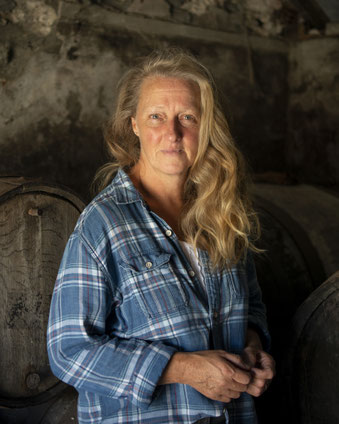
When Raynor Winn and her husband Moth, who was diagnosed with a terminal illness a few years ago, lost their home and everything they had established, there was only one way out for them - they decided to go on a walk along the South West Coast Path with their rucksacks and a tent. On this journey which changed their lives and inspired Raynor Winn to write the best-selling book The Salt Path, they encountered nature in a particularly intensive way. Raynor Winn talks to me about what it meant to be homeless, the special place she feels safest and what nature's voice sounds like.
Dear Raynor, at the end of September you and your Husband Moth returned from a four month long walk – where did you start your walk and where did it end?
It started in Cape Wrath, on the north west corner of Scotland. And ended here on the South West Coast Path in Polruan, on the Coast of Cornwall. It’s where The Salt Path ended.
Do you usually plan a walk from beginning to end and how spontaneous are you about where you spend the night?
Although we have a rough plan for the walk, we don’t plan where we will sleep at all. Because we never know how far we are going to be able to walk in the day. So if we book something ahead and then we can’t get that far we would have to cancel, so we have to do it really spontaneously. If we find a beautiful spot in the afternoon, then we’ll stay. Usually when it started to get dusk, we just put up the tent where it seems appropriate.
© Raynor Winn
Do you take notes while you are on a trip?
I haven’t taken notes before. Certainly for The Salt Path and the walks that I talked about in the Wild Silence I had no notes. All we had were the little notes that Moth writes in the margins of the guide books. Those are the notes I worked on when I wrote The Salt Path. I had the guide book copy of Paddy Dillon’s The South West Coastal Path that we would use. It has a description of the path and a OS (ordnance survey) map that covers the whole of the path that runs right through the guide book. Putting those three together was almost as if I was back on the path. I could smell the salt, feel the wind and memories were so sharp and clear. But this time I have kept some notes. There is something about walking slowly through a landscape. You absorb it in a way you don’t do when you are just passing through quickly in a car or on a train. When you immerse in a landscape for hours every day and you maybe have two conversations with people during the day, then you remember clearly, it’s quite distinct. So yes, this time I did take notes.
Nature seems to have always played an essential role in your life, what inspires you when you are exposed to the natural world?
I think it comes back to my childhood, because I grew up on a farm. So most of my childhood was just spent in the fields or in the woods, just being out in nature, being very tactile with the earth, with the wildlife. And it’s part of who I am. If I go out into the natural world now it’s almost like a physical response to it. I feel where I belong and a deep sense of being part of it.
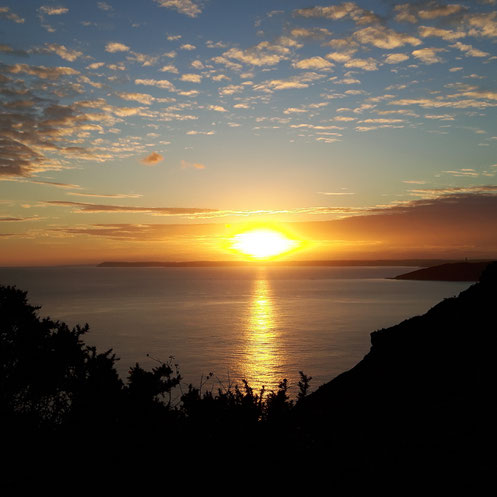
What has changed for you since you wrote The Salt Path?
Everything and nothing. I think in respect of all practical things obviously the book sold many copies and that changed our material position. I don’t worry so much now about paying the rent and I don’t panic when the electric bill comes through the door. And we have moved from where we were living at the end of The Salt Path. Because we were contacted by someone who had read The Salt Path and offered us a different place to live and now we are living in a different way to how we were before. But then again absolutely nothing has changed. Moth and I are still the same. We still think the same thoughts and do the same things. In September I got back from walking four months down the country with a rucksack on my back, sleeping in the tent most nights and I got back and I thought – what has changed? Really nothing at all!
I have met so many people since the book has been published. Especially at the events where I have gone to talk about the book I’ve met hundreds of people, who have told me their stories and shared their lives, their issues and their problems. And I’ve come to realize that we are all the same and we go through moments in life where things fall apart, whether it’s financially, emotional or health and whatever the cause is, we are lucky if we get through life without having a moment where things really go wrong. And I think when that happens, we all share those same emotions, same fears and hopes even if the whole scenario is different. I have given my story possibly a bit more openly than I should have done [laughs] but I think that has opened the door for other people to share their stories with me. It’s really been a two way relationship publishing these books. I’ve given them mine and they have given back so much of theirs too. It’s been a shared experience with a lot of the readers.
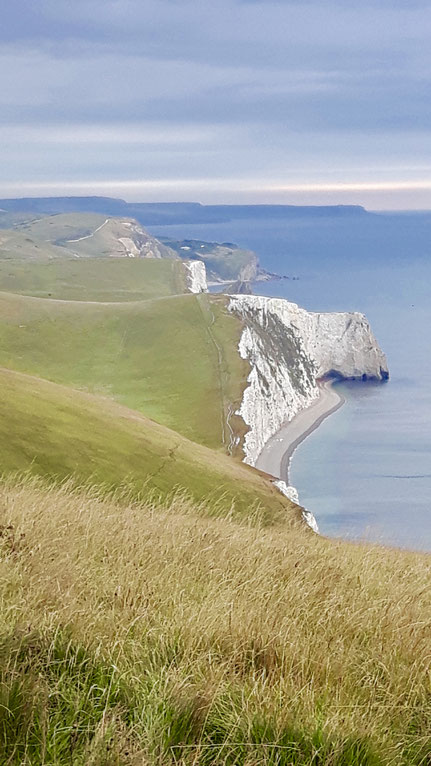
Do you think your childhood on a farm has made it easier for you to connect with nature and do you see it as a special place where you experience a sense of belonging?
I think so. Because I spent a lot of time alone as a child, playing in the woods and in the fields. It was just part of who I was. It wasn’t something I thought about. I just went out and explored nature. And that stayed with me for all of my life because Moth and I had our place in Wales, it was quite remote, out in the countryside. And now, looking back on it, I think it’s part of my DNA. [laughs] That world is really part of who I am. I used to go to the woods when I was quite small. And it was a place I was never supposed to go because the game keeper there set traps for the foxes. So it was quite dangerous I suppose. My parents didn’t want me to go there, but I went anyway. I used to spent hours in there watching the wildlife – the birds, the pheasants, the rabbits and just listening to the wind in the trees. And there was always something else I wanted to find out, always something I wanted to discover. This is a ridiculous little story, but there were always a lot of rabbits on our farm and I used to block up rabbit holes, so they couldn’t get down. It was that sort of nonsense I did in my childhood. So while my friends were playing in the park I was just trapping rabbits in the woods. That was really part of who I was. It was a curiosity about how it all interacted and how I could interact with nature.
© Raynor Winn
And you had the time and the place to do it.
Yes, I was lucky I lived on a farm and I had the freedom to roam in quite a large area.
Where do you feel safe?
It’s there in the natural world where I feel the safest. The sense of self and security and a feeling of belonging. It all comes from that.
If you could be an animal, what kind of animal would you be and why?
[laughs] I would be a crow because there`s something really independent and resilient about crows. They just make their mark and then they go. And there’s something so positive about them. Yes, I would be a crow.
Were there moments on your journey when you realized you can rely on nature to guide and protect you?
I think so, it occurs at some point on just every journey we make. We were so lost in every possible way when we were walking the South West Coast Path. There was something about that strip of wilderness there between ordinary life on one side and the sea on the other, that just held us together, that kept us walking and moving forward. And we came to see that path as being our purpose and our reason to go on. And then again on our walk in Island it was a remote, wild and absolutely different place. You can feel that sense of connection to the earth and to nature and that took the edge off the strangeness in a way. Always there, always present. It comes back to that sense of what makes you feel safe. Yes, there is always something there in nature that will protect you. On this past walk it’s been incredibly different because we have seen nature in so many different forms. There were moments when we were so exposed to the weather, so isolated but then we found shelter in an overhang of rock or a scrape where the sheep normally sit in. We’ve watched wildlife on this path like a golden eagle finding a cleft in a rock to hide from the torrential rain. Or deer standing together with their backs in the rain. And in some respect we felt the same. Because there would be moments where we have done the same thing, we turned our backs and we huddled together because that’s the only way to deal with it and I think in so many ways we are no different to the wild life.
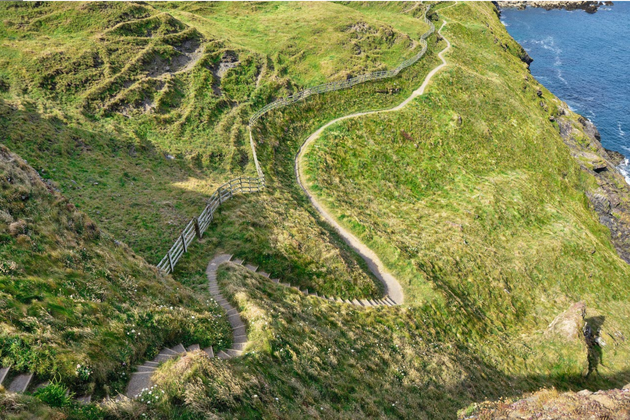
What does nature’s voice sound like to you?
That was so difficult to write in The Wild Silence and I don’t really know if I have succeeded with it or not. I wanted to give it that sense like there is another person in the room and you can’t see them. That sense of there is always something in the background but you don’t necessarily always acknowledge it. As if you know that there are sparrows on the move but you can’t see them. That sense of everything is okay because there’s this sheltering hand at your back. That‘s the feeling I was trying to express. It’s an elemental feeling. Being part of something bigger. A moving part in a larger picture.
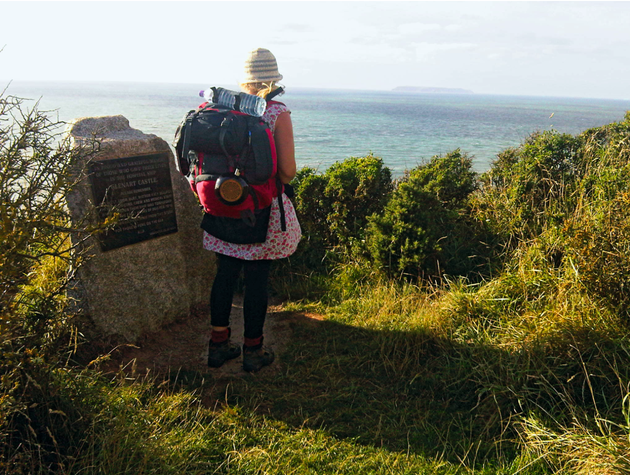
On the South West Coast Path you met other people who were homeless just like you. How does Society need to change the perception of homelessness?
That was a very difficult time. We hadn’t encountered homelessness before, so we were certainly not expecting the amount of prejudice and preconception about homelessness that we met. It was really hard to find our place in society as soon as we became homeless. The way people viewed us changed almost overnight. To the point where people almost physically recoiled when you told them you were homeless. That was completely shocking to us. And the way people really didn’t want to communicate with us. You suddenly became a statistic, an issue, a problem. I think the first step towards solving the problem, is to stop seeing homeless people as statistics. All individuals have come to homelessness through their own life story for different reasons. Although many people have a fear of homeless people because they think that they are only homeless because of mental health issues, that is not the case. That maybe what you see on the streets in the shop doorway may just be a problem on the streets. But there are thousands of people behind them who are just as homeless but not as visible. Every single person who is homeless has to be treated as an individual because they have their own story. And I think the biggest way towards solving this crisis of homelessness, because it is a crisis in this country, is if we were truthful about the numbers. We don’t publish the true numbers. The numbers are taken in a snapshot way that do not capture the true numbers of people who are homeless. If they are not there and are not visible, then they don’t get counted. That is street homelessness, but the other homelessness that lies behind that gets so fudged in the figures, by councils and government departments. It is a far bigger issue than the statistics show it today. Two ways to address it immediately is to think of them as human beings and not as shop doorway issues. And counting properly. Actually publishing the correct figures and then people would see that it is not a minority problem.
How did your dog Monty come into your life?
The way I talk about dogs and dogwalkers in The Salt Path you wouldn’t think I would ever have a dog, would you? [we both laugh]. We went to this Farm for some reason and the owner had this little tiny puppy in a cage in the back of his shed. He had sold all the others, they were twice the size of him and nobody wanted him because he’s got wonky legs, funny little bent legs. His back legs are perfect, but his front legs look like little Cabriole table legs. [we both laugh] And the owner said if he’s not gone by Friday he’s in a bucket, and he was going to drown him. And we said – no you can’t do that! So we went home with a puppy. We hadn’t even considered having a dog or a puppy, living in that one bedroom apartment in Polruan with no garden and we thought – what have we done? He’s turned out to be the most surprising little addition to our family. He’s very small and with his wonky legs he couldn’t come on this big walk with us this year, cause it would have been too far for him. He’s a very happy little dog who plays endless football with his tennis balls.
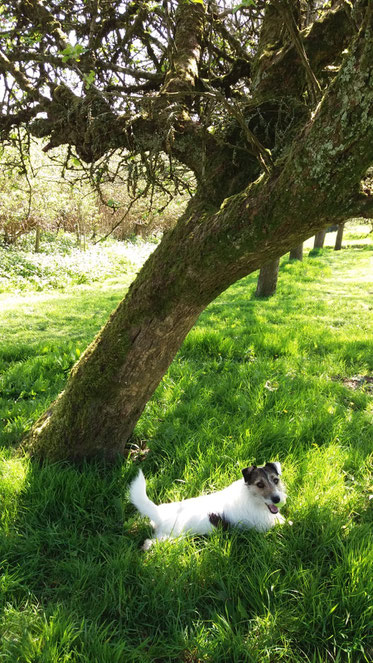
How is your life on the farm where you live now?
It was a very neglected agricultural overused farm with this very old cider orchard, that had this incredible history of cider making going back for hundreds of years. The owner had this dream, that he would be able to return it to a haven for wildlife and to bring the bio diversity back to the farm. He read The Salt Path so he knew us and he thought we were the people to come and help him. We came here and really it’s not what we’ve done here, it’s more what we haven’t done. We’ve stopped the heavy chemical input onto the land and reduced the stocking levels right down and taken away all the agricultural pollution. In doing so the place has transformed. The wildlife has come back in abundance, there are birds here that you have never seen before. Insect life is here in clouds and pollinators that most definitely weren’t here before. In every way the farm has benefitted from that. Last night we were looking out of the window and suddenly there were hundreds of these tiny little birds just collected over the electric wires. We had never seen them before. I got the binoculars out and there were clouds of them, chattering, flying up and landing again as if they had just arrived from somewhere. They were Redpolls, little birds the size of a robin with red flecks on their front. They migrated apparently from northern Europe and mainly eat berries. We have left the hedges and not cut them, so they are full of berries this year. Obviously attracting this migrant flock of birds. The way they play with each other, it’s been a wonderful thing to see.

How would you define home?
It really comes back to a lot of things I have been talking about before. When we lost our house in Wales I really thought I would never feel that sense of home again. We thought it was there in those walls, in that house where we had lived all those years, where the children had grown up. I thought that was home. But then walking on that coast path I came to realize that home isn’t the walls. It is something you have inside yourself. It is coming back to the thing about nature, what gives you that sense of safety. A sense of security. A sense of who you are. For me that is being out in the natural world, but also my family, whether they are there on the path next to me or scattered across the country. That is what home is for me now. Something you can carry with you. But looking back on this long walk this year, I think I felt more of a sense of home when we found our way back onto the South West Coast Path on the final three days of the walk. Onto that path that is only like a foot wide, I felt more as if I had come home than I did when I got back to the house. That was wonderful.
What plans do you have for the future?
Well we are here on the farm and we are hoping to continue to extend the biodiversity, that’s the plan. And I’ll be writing another book which I made a start on today [laughs] that will be out in September next year. It will be about a walk we have just completed and the many things we have discovered along the way.














